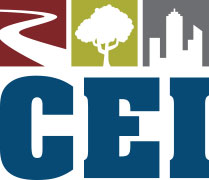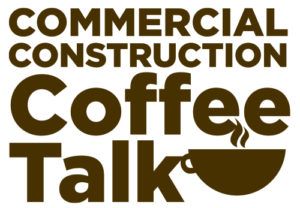Whether you’re a homeowner tackling a DIY renovation, a contractor managing a construction site, or a business owner dealing with everyday waste, the accumulation of debris can quickly turn into a logistical nightmare. Piles of discarded materials, overflowing bins, and the looming question of “Where does all this go?” can bring any project to a grinding halt. Effective waste management is crucial for maintaining a safe and organized workspace, ensuring project efficiency, and minimizing environmental impact.
That’s where commercial dumpster service providers come in. Choosing the right dumpster for your specific needs is essential for taming the chaos of project waste and keeping things running smoothly. This article will guide you through the key considerations for selecting the perfect dumpster, ensuring your project stays on track and your waste is managed responsibly.
Building Smarter Waste Solutions: How Tailoring Your Dumpster Choice to Project Waste Improves Efficiency and Compliance
Before diving into dumpster sizes and types, it’s crucial to understand the nature of the waste you’ll be dealing with. Waste can be broadly categorized into different types, including construction and demolition debris, household junk, yard waste, and industrial byproducts. Each project generates its unique waste profile. For instance, a roofing project will produce shingles, wood, and metal, while a kitchen remodel might involve discarded cabinets, countertops, and appliances. Identifying the specific waste materials your project will generate is the first step in choosing the right dumpster.
It’s also essential to be aware of prohibited items that are typically not accepted in dumpsters, such as hazardous waste, electronics, and appliances. These items often require specialized disposal methods to ensure environmental safety and compliance with regulations. By understanding your waste stream and its limitations, you can make informed decisions about the appropriate dumpster for your needs.
Dumpster Sizes and Their Applications
It seems like you want to incorporate information about dumpster sizes into a table of pros and cons. However, a simple pros and cons list might not be the best way to present this information, as dumpster size itself isn’t inherently good or bad. It’s about choosing the right size.
Instead of a pros and cons table, how about a table that helps users understand dumpster sizes and their best applications? Here’s an example:
Dumpster Size Capacity (approx.) Ideal for…
10-yard 3 pickup truckloads Small bathroom remodel, minor landscaping, single room cleanout
20-yard 6 pickup truck loads Whole-house cleanout, larger roofing job, garage demolition
30-yard 9 pickup truck loads Major home renovation, construction of a small addition, and large landscaping projects
40-yard 12 pickup truck loads Large-scale construction, demolition projects, whole-house gut renovations
Safety, Compliance, and Efficiency: The Hidden Benefits of Using Specialized Dumpsters for Your Project Waste
While the standard roll-off dumpster is suitable for many projects, there are specialized dumpster types designed for specific needs. Construction debris dumpsters, for instance, are built to handle heavy and bulky materials like concrete, brick, and lumber. They often feature reinforced walls and a lower profile for easier loading of heavy debris. For projects involving concrete pouring or demolition, concrete washout dumpsters are essential for containing and properly disposing of concrete slurry.
These specialized dumpsters prevent environmental contamination and ensure compliance with regulations. If security is a concern, dumpsters with lids are available to prevent unauthorized dumping or scavenging. These are particularly useful for projects in public areas or when sensitive materials are being disposed of. Choosing the right type of dumpster ensures that your waste is contained safely and efficiently, minimizing risks and maximizing productivity.
More Than Just Size: The Essential Factors to Consider for a Successful Dumpster Rental Experience
While dumpster size is a primary consideration, other factors are equally important in choosing the right dumpster for your project. Weight limits are crucial to avoid exceeding the dumpster’s capacity and incurring overage charges. Most dumpsters have a specified weight limit, and exceeding this limit can result in additional fees. It’s essential to estimate the weight of your debris accurately and communicate this information to your rental provider. Rental periods also vary, offering flexibility for projects of different durations.
Most companies offer standard rental periods of 7 to 14 days, with the option to extend the rental if needed. This flexibility is essential for projects of all scales, from residential cleanups to those requiring an industrial dumpster for extended periods. This ensures that you have ample time to complete your project without feeling rushed. Finally, consider the placement and accessibility of the dumpster. Ensure you have adequate space on your property for the dumpster to be delivered and placed safely. The location should also allow for easy access for loading debris, minimizing manual labor and ensuring efficient waste disposal.
From Cardboard to Chemicals: How to Manage Waste Responsibly with the Right Dumpster Rental
Choosing the right dumpster is not just about convenience and efficiency; it’s also about responsible waste management and minimizing environmental impact. Whenever possible, separate recyclable materials like cardboard, metal, and plastics from general waste. This allows for proper recycling and reduces the amount of waste sent to landfills. For hazardous materials like paint, chemicals, and batteries, consult your local waste management authorities for proper disposal guidelines.
Many communities have designated drop-off locations or special collection events for hazardous waste. When choosing a dumpster rental provider, consider companies that prioritize sustainable waste management practices. Look for providers who partner with recycling facilities and actively promote responsible disposal methods. By making conscious choices about waste disposal, you contribute to a healthier environment and a more sustainable future.
Conclusion
Choosing the right dumpster for your project is a crucial step in ensuring efficient waste management and project success. By understanding your waste stream, considering dumpster sizes and types, factoring in weight limits and rental periods, and prioritizing responsible disposal practices, you can effectively tame the chaos of project waste. Whether you’re tackling a home renovation, managing a construction site, or simply clearing out clutter, selecting the appropriate home renovation dumpster (or a suitable alternative) streamlines your workflow, minimizes stress, and contributes to a cleaner environment.
Remember, proper waste management is not just about convenience; it’s about responsibility, efficiency, and creating a positive impact on our surroundings. So, take the time to assess your needs, choose wisely, and enjoy the peace of mind that comes with a well-managed waste disposal solution.




























